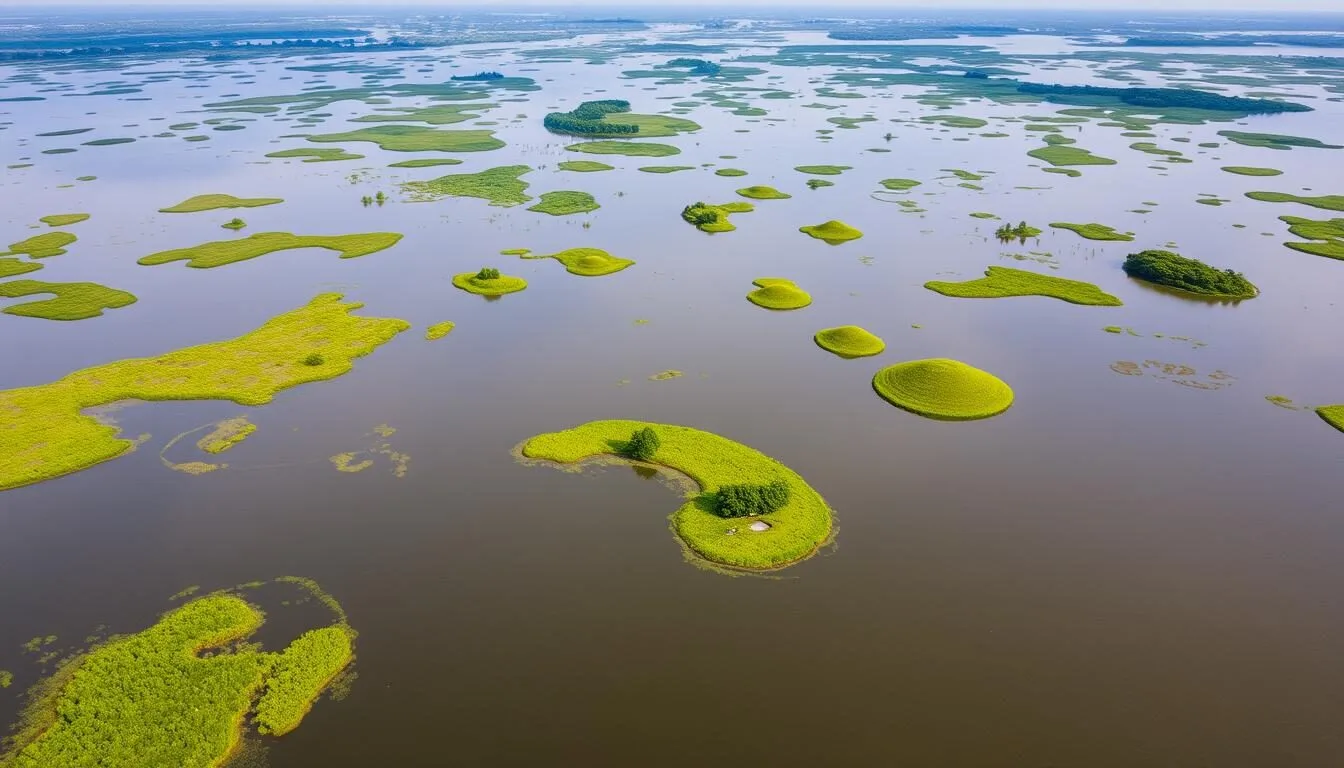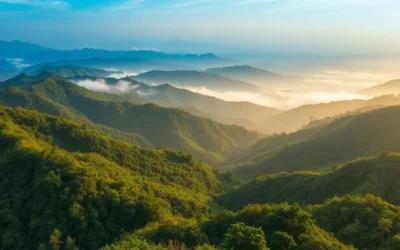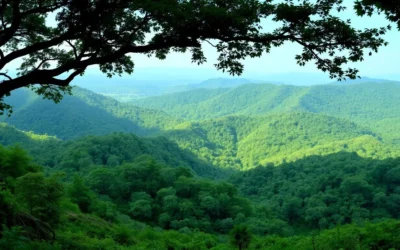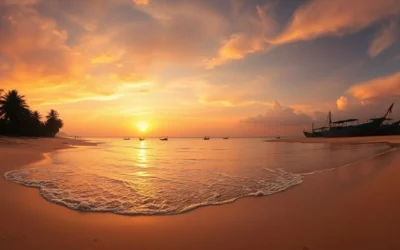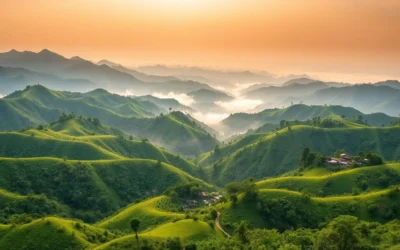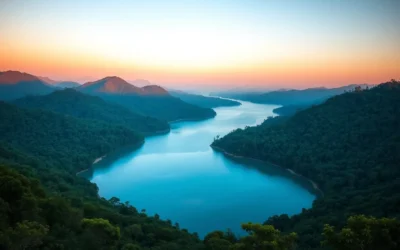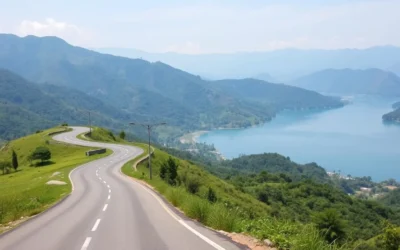✓ Accommodations✓ Flights✓ Rental Cars
Getting to Hakaluki Haor
The vast expanse of Hakaluki Haor during monsoon season
Reaching Hakaluki Haor requires some planning, as this natural wonder is located in northeastern Bangladesh, spanning across Moulvibazar and Sylhet districts. The wetland is approximately 238 km from Dhaka, the capital city of Bangladesh.
By Air
The closest airport is Osmani International Airport in Sylhet. From Dhaka, several domestic airlines operate daily flights to Sylhet, with a flight time of approximately 45 minutes.
Find the Best Flight Deals to Sylhet
Compare prices from multiple airlines and book your flight to start your Hakaluki Haor adventure.
By Road
From Sylhet or Moulvibazar town, hire a local vehicle to reach the wetland areas. The journey takes approximately 2-3 hours depending on your starting point. The main access points to Hakaluki Haor are through the towns of Kulaura, Juri, Barlekha, Fenchuganj, and Golapganj.
Need a Rental Car?
Explore Hakaluki Haor and surrounding areas at your own pace with a rental vehicle.
Local Transportation
Once you reach the edge of the haor, boats are the primary mode of transportation. Local wooden boats can be hired from villages surrounding the wetland. For a more comfortable experience, arrange a boat tour through local guides or tour operators in advance.
Best Time to Visit Hakaluki Haor
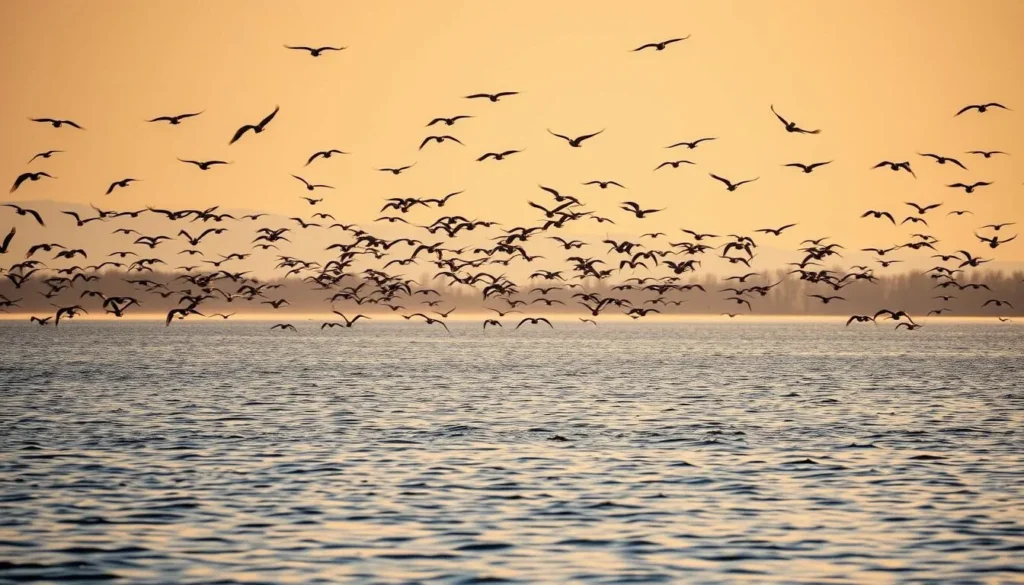
Winter brings thousands of migratory birds to Hakaluki Haor
Hakaluki Haor transforms dramatically with the seasons, offering completely different experiences throughout the year. Your visit timing should align with what you hope to experience in this dynamic ecosystem.
November to February (Winter)
This is the ideal time for birdwatchers and wildlife enthusiasts. During winter, thousands of migratory birds from Siberia and other northern regions flock to Hakaluki Haor. The water level recedes, creating perfect conditions for bird watching and photography. The weather is pleasant with temperatures ranging from 10°C to 25°C.
Winter also offers easier access to various parts of the haor as water levels are lower, making boat navigation simpler.
June to October (Monsoon)
During monsoon, Hakaluki Haor transforms into a vast inland sea with villages appearing as islands. This period offers spectacular views of the water kingdom but comes with challenges for travelers. Boat journeys can be rough due to waves, and some areas might be inaccessible due to flooding.
However, this season showcases the true magnificence of the haor ecosystem and provides opportunities to witness the unique lifestyle of local communities adapted to living with water.
Travel Tip: March to May is generally not recommended for visiting as the water bodies start drying up, temperatures rise significantly (up to 35°C), and the biodiversity is less visible during this transition period.
Top Things to Do in Hakaluki Haor
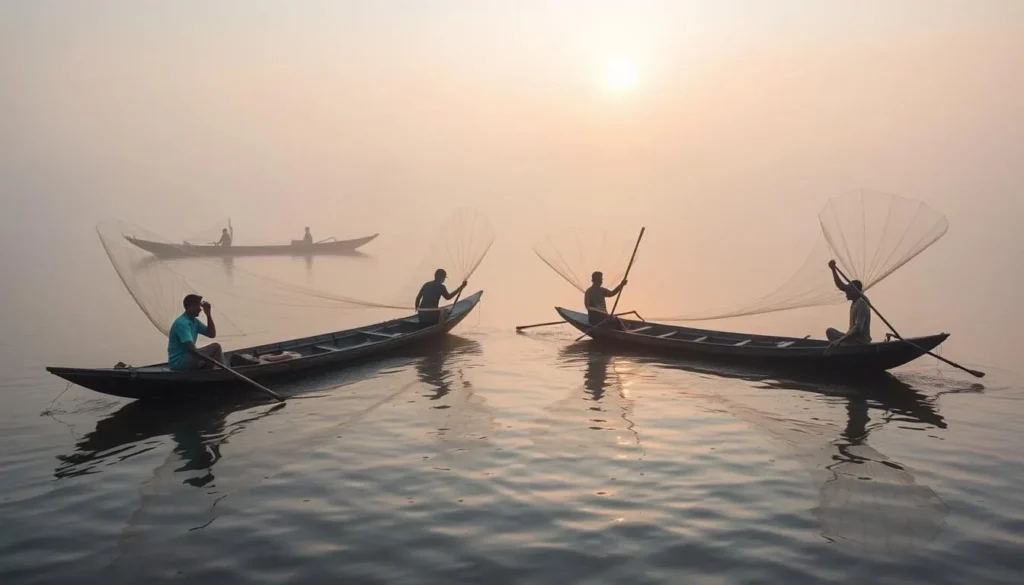
Local fishermen practicing traditional fishing methods in Hakaluki Haor
1. Birdwatching Expeditions
Hakaluki Haor is a paradise for birdwatchers, especially during winter when migratory birds arrive. Species you might spot include the Pallas’s Fish Eagle, Grey-headed Fish Eagle, Ferruginous Duck, Northern Pintail, and various kingfishers. The area locally known as “Pakhighor” (Bird’s Nest) is particularly renowned for bird sightings.
Book a Guided Birdwatching Tour
Maximize your chances of spotting rare bird species with expert local guides who know the best viewing spots.
2. Boat Tours Through the Wetland
Exploring Hakaluki Haor by boat is the quintessential experience. Navigate through water channels, visit floating villages, and witness the unique aquatic ecosystem. Early morning boat rides offer the most magical experience with mist hanging over the water and birds beginning their day.
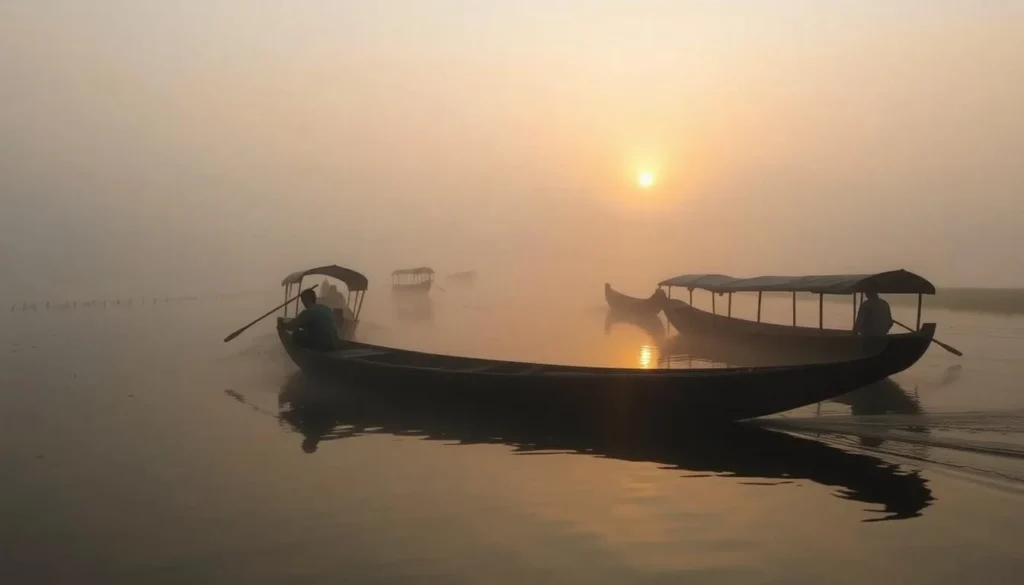
Early morning boat tours offer magical misty views of the haor
3. Visit Local Fishing Communities
The communities surrounding Hakaluki Haor have developed unique lifestyles adapted to the changing water levels. Visit villages like Chatla and Tekerghat to witness traditional fishing methods and the daily life of haor communities. Many families welcome visitors and are happy to share their cultural practices.
4. Explore the Fish Sanctuaries
Hakaluki Haor contains several designated fish sanctuaries that serve as breeding grounds for indigenous fish species. These protected areas, established through conservation efforts, play a crucial role in maintaining the haor’s biodiversity. Visiting these sanctuaries provides insight into conservation efforts and the importance of sustainable resource management.
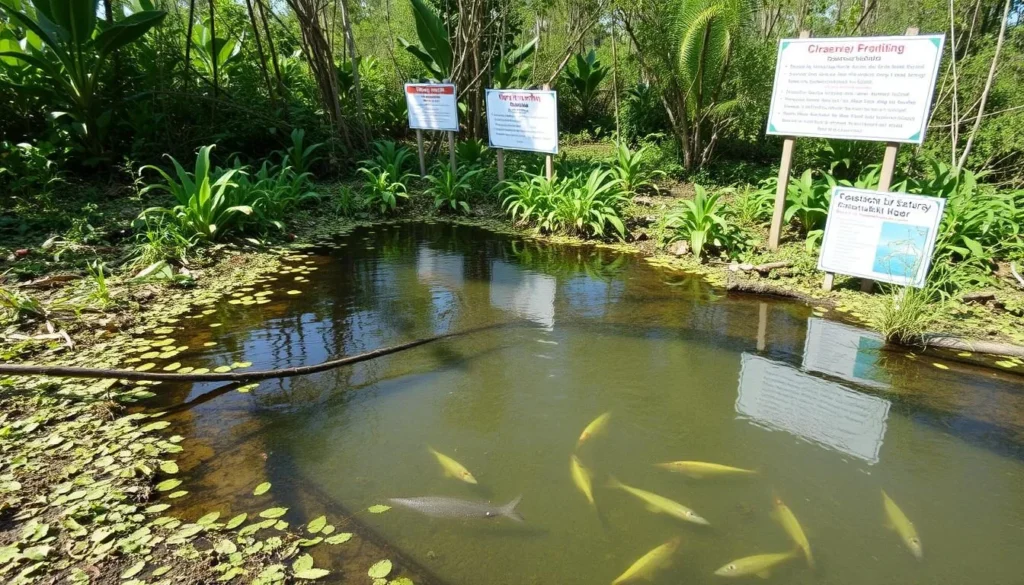
Protected fish sanctuary areas help preserve indigenous fish species
5. Photography Opportunities
The haor offers endless photography opportunities, from stunning landscapes to wildlife and cultural documentation. The changing light throughout the day creates different moods – dawn and dusk are particularly magical for capturing the essence of this wetland ecosystem.
Where to Stay Near Hakaluki Haor
Accommodation options directly at Hakaluki Haor are limited, but several nearby towns offer places to stay that provide good access to the wetland.
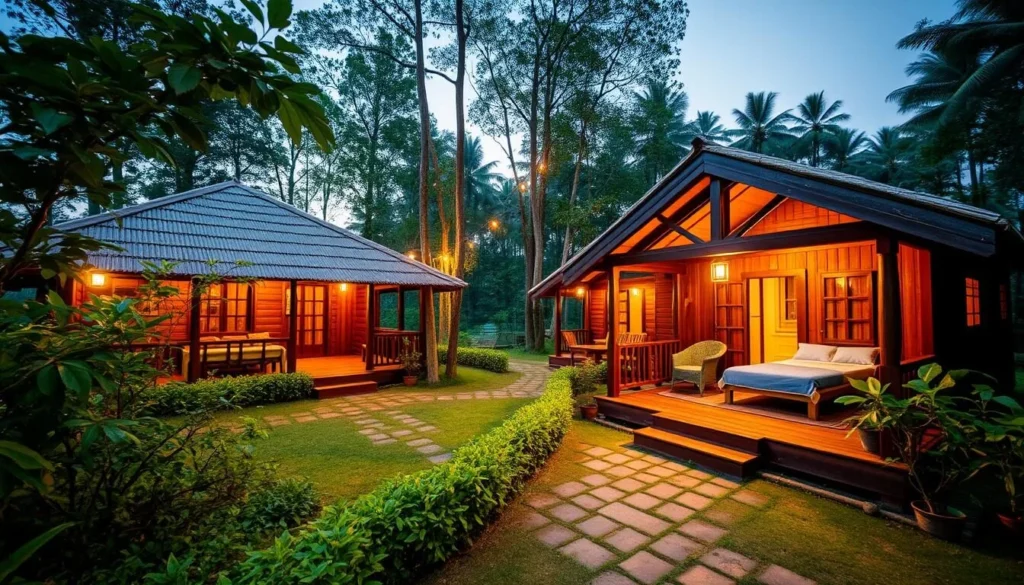
Eco-friendly accommodations are emerging around the haor region
Moulvibazar and Sylhet
The cities of Moulvibazar and Sylhet offer the widest range of accommodation options, from budget guesthouses to luxury hotels. Staying in these cities means a longer journey to the haor (1-2 hours by car), but provides more comfort and amenities.
Kulaura and Barlekha
These towns are closer to Hakaluki Haor and offer basic guesthouses and rest houses. While amenities are limited, staying here reduces travel time to the wetland and provides a more authentic local experience.
Homestays
Some villages around the haor offer basic homestay experiences where you can stay with local families. These provide the most authentic cultural experience but expect very basic facilities without modern amenities.
Find Your Perfect Stay
Browse accommodation options in Sylhet and Moulvibazar districts to find the perfect base for your Hakaluki Haor adventure.
Practical Tips for Visiting Hakaluki Haor
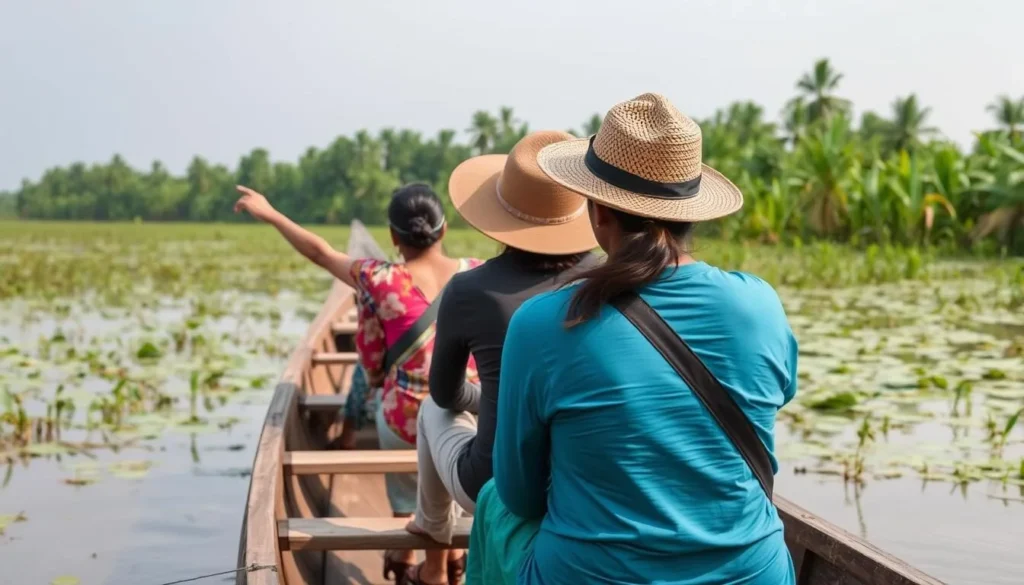
Exploring with a knowledgeable local guide enhances your haor experience
Essential Preparations
- Hire a local guide who knows the area well and can communicate with local communities
- Bring binoculars for birdwatching and wildlife spotting
- Pack a good camera with zoom lens for wildlife photography
- Wear lightweight, quick-drying clothes and waterproof footwear
- Bring sun protection (hat, sunglasses, sunscreen) as boat trips offer little shade
- Carry insect repellent, especially during warmer months
- Bring basic medications and a first-aid kit as medical facilities are limited
Local Etiquette
- Ask permission before photographing local people
- Dress modestly when visiting villages (cover shoulders and knees)
- Remove shoes when entering someone’s home
- Learn a few basic Bengali phrases to connect with locals
- Support local communities by purchasing handicrafts or locally produced items
- Respect fishing areas and don’t disturb active fishing operations
- Follow all guidelines in protected areas and fish sanctuaries
Important: During monsoon season, water conditions can change rapidly. Always follow safety instructions from local guides and wear life jackets during boat trips. Check weather forecasts before planning boat excursions.
Connectivity
Mobile network coverage is available in most areas around Hakaluki Haor but can be spotty in more remote sections. Major Bangladesh mobile operators like Grameenphone, Robi, and Banglalink provide service in the region. Consider downloading offline maps before your trip as internet connectivity may be limited.
Conservation and Sustainability
Hakaluki Haor faces several environmental challenges including habitat degradation, overfishing, and the impacts of climate change. As a visitor, you can contribute to conservation efforts by following responsible tourism practices:
- Leave no trace – take all trash with you and dispose of it properly
- Don’t disturb wildlife or remove plants from the ecosystem
- Support local conservation initiatives through donations or participation
- Choose tour operators with sustainable practices
- Learn about and share the ecological importance of wetlands
Several organizations, including the Department of Environment (DoE) and the Center for Natural Resource Studies (CNRS), are working to protect Hakaluki Haor, which was declared an Ecologically Critical Area in 1999. Some tour operators contribute a portion of their fees to these conservation efforts.
Local Cuisine

Fresh fish curry is a local specialty around Hakaluki Haor
The cuisine around Hakaluki Haor is dominated by freshwater fish dishes. Local specialties include:
- Shorshe Ilish – Hilsa fish cooked in mustard sauce
- Pabda Macher Jhol – Butter catfish in light gravy
- Chitol Macher Muitha – Fish dumplings in curry
- Bhapa Pitha – Steamed rice cakes, often served with molasses
- Boishakhi Khichuri – Rice and lentil dish prepared during celebrations
Most villages around the haor don’t have formal restaurants, but local families sometimes offer meals to visitors. In towns like Kulaura and Moulvibazar, you’ll find small restaurants serving authentic Bengali cuisine.
Experience the Magic of Hakaluki Haor
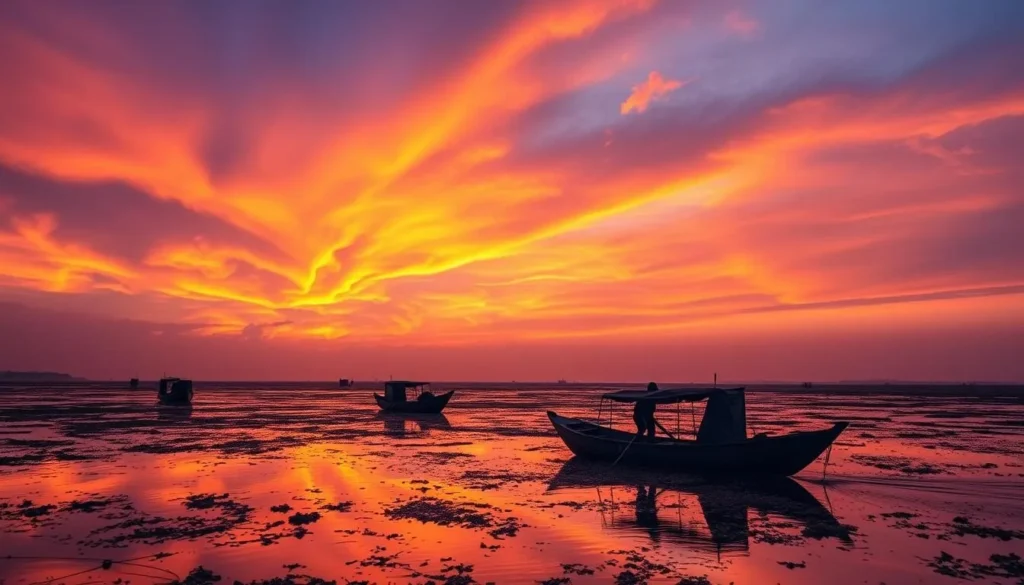
The magical sunset over Hakaluki Haor creates unforgettable memories
Hakaluki Haor offers a rare glimpse into a world where humans and nature still coexist in delicate balance. This vast wetland ecosystem, with its seasonal transformations, rich biodiversity, and resilient communities, provides an authentic travel experience far removed from conventional tourism.
Whether you’re watching thousands of migratory birds take flight at dawn, navigating through floating water hyacinth on a wooden boat, or sharing a meal with a local fishing family, Hakaluki Haor creates memories that linger long after your journey ends. As Bangladesh’s tourism infrastructure develops, now is the perfect time to experience this ecological wonder in its most authentic form.
Ready for Your Hakaluki Haor Adventure?
Start planning your journey to one of Bangladesh’s most spectacular natural wonders.
The above is subject to change.
Check back often to TRAVEL.COM for the latest travel tips and deals.
